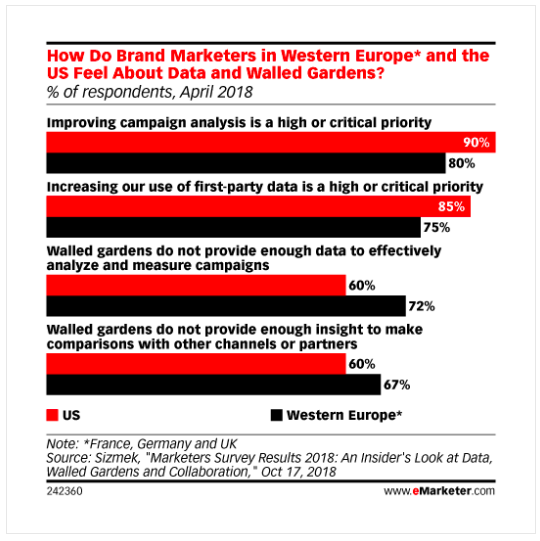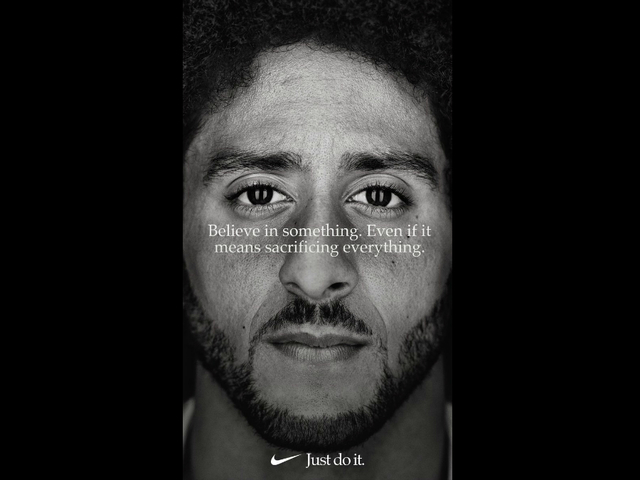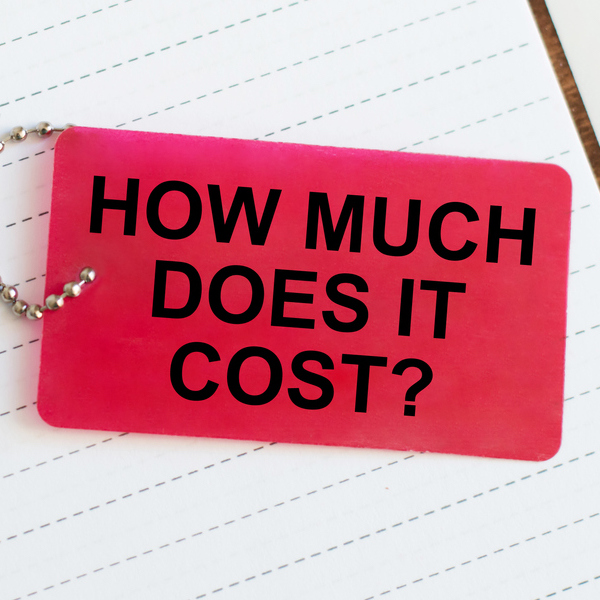It was another year of rapid change in our industry. At times, it felt like we were taking one step forward, and two steps back: racing to adopt exciting new technology like machine learning and virtual reality, while also examining how to more responsibly leverage user data and comply with legislation and consumer demand for privacy.
So as we head into 2019, where does that leave us? I’m hoping for a more balanced space, where the demand for both creative innovation and transparency will create a healthier push-pull between brands and their audiences.
As a result, here are a few of the trends I think we’ll see take the lead in the year ahead.
1. Data collection transparency
To comply with GDPR, marketers started doing something this past year that may have been unthinkable a few years ago–asking for permission. And in turn, audiences weren’t afraid to deny us access to their data when brand authenticity or reciprocal value was in question.

I think 2019 will surface more creative approaches to the canned, “This site uses cookies” checkbox that every sitemaster apparently copied and pasted onto a homepage pop-up over the course of 2018. Smarter brands will begin using consent collection as an opportunity to level with audiences and set expectations for how their data will ultimately be used to improve the customer experience, whether that’s through more personalized product recommendations, intuitive user interfaces, or relevant follow-up communications.
2. Quality not quantity

As Justin Merickel, Vice President Media Optimizer at Adobe Advertising Cloud said recently, “Brands need to rely more on clean data from their own loyal customers, who willingly give information in exchange for something they value. Most marketers intrinsically know this, but less than half use first-party data to target ads today because implementation and execution are hard. I believe we’ll see more brands get this right over the next year.
3. Politically-charged campaigns

Nearly two-thirds of consumers (up from 51 percent in 2017) are now considered what Edelman calls “Belief-Driven Buyers,” or those that choose, switch to or boycott a brand based on its stand on societal issues. In response, companies are now more willing than ever to take a stand on issues related to their brand’s purpose, whether that be women’s health, gun reform, or climate change. In a recent Washington Post article about “buycotts,” Jena McGregor points out that, “The strategy of attracting consumers who are willing to spend more—by taking a stand on an issue or expressing how a company views a social issue—may better position brands than the strategy of remaining neutral.”
Unlike the tone-deaf, diluted commentary on social issues we’ve seen over the years (a la Pepsi’s failed protest ad of 2017), we’ve entered a high risk, high reward environment—one that’s ultimately driven brands to become more outspoken than ever. Love it or hate it, Nike’s bold Colin Kapernick campaign drove a 31 percent sales increase and an estimated $43 million dollars in media exposure—the vast majority of it neutral to positive. Ben & Jerry’s new flavor, called Welcome to the Resistance. Together, Pecan Resist! drove a 4.7% increase in stock when released a week before the midterm elections. And Patagonia earned wild support from its environmentally-conscious customer base when it publicly endorsed two Democratic senate candidates, referencing its desire to “stand up for millions of Americans who want to see wild places protected for future generations.”
The concept of big brands taking a political stance is not a new one. But we expect the recent success of campaigns with a more overt political tone to embolden smaller (and less obvious brands) to do the same in 2019.
4. Physical experiences

[Source: University of Pennsylvania]
Perhaps as a direct response to Facebook privacy scandals and digital ad blocking reaching an all-time high of 30%, experiential marketing gained tons of momentum in 2018. Stunts like Payless’ “PALESSI” and Canada Goose’s subfreezing dressing rooms quickly transitioned from offline experiences to online conversations, making each campaign go viral almost immediately. Giving consumers the opportunity to physically experience what a brand is all about, without the pressure of buying something right away, is a proven way to increase long-term loyalty.
Although the best experiential campaigns are completely unique to the brand (and thus can’t be replicated), we anticipate that the tactic itself will be widely adopted in 2019.
Furthermore, as Amazon approaches 600 brick-and-mortar retail locations across the US, (including Whole Foods Markets and its own retail stores like Amazon Books), we expect features like cashier-less checkout and personalized product recommendations to quickly shift shopper expectations for in-store experiences and drive mass adoption of these techniques across the retail industry. We’ve already seen other brands following suit with these techniques, such as Goodyear’s unique “Roll” stores, changing the game in an industry not typically known for a fun or personalized in-person shopping experience.
5. Mainstream virtual reality
Physical experiences won’t be the only new focus for brands frustrated by advertising ruts. In recent years, we’ve seen organizations like FEMA and The Weather Channel leverage virtual and augmented reality to educate audiences through the simulation of natural disasters. “In terms of storytelling, we know that we can change behaviors by combining the analytic side of the brain with the emotional side,” said Tony Silva, EVP, and head of the Social Change Group at Ogilvy. “We put them in this immersive storytelling where they can see it. It’s very real for them to see a community that looks like theirs underwater or to participate in clearing streets in this virtual environment.”

As virtual reality devices become more affordable and widely-adopted by consumers this year, we expect other socially-conscious or educational brands to harness the power of immersive storytelling to create more memorable learning experiences.
6. Creative and useful voice strategies
In response to the mass adoption of home speaker devices in 2018, many brands have begun optimizing their websites for voice search by incorporating more natural language into page content (i.e. words and phrases people actually speak).

But in 2019, I expect things to get a little more interesting, particularly since Google Home & Amazon Echo’s operating systems don’t run paid advertising (and according to recent earnings calls have no plans to). Whether that’s through developing voice-interactive games like HBO’s choose-your-own-adventure game “The Maze” (made especially for superfans of its show “Westworld”), or offering audio-centric “skills” such as Oral-B’s tooth-brushing timer, we’re excited to see brands find their voices this year as they dedicate more resources to audio formats.
—
The bottom line? Consumer trust and brand satisfaction will become the ruling currency in the coming year. Whether companies opt to build that trust through more transparency, public advocacy, physical experiences or virtual ones, it will call for creative informed by a clear understanding of brand values, audience motives, and contextual relevance.






